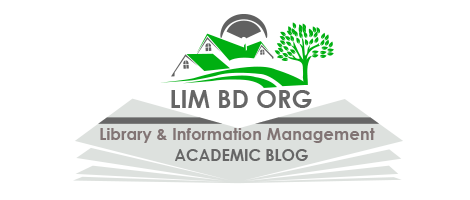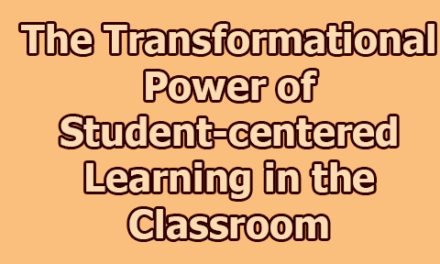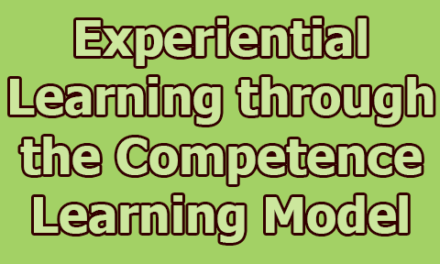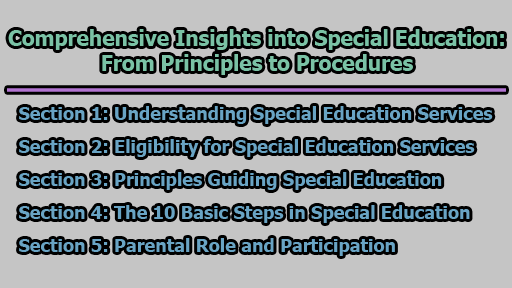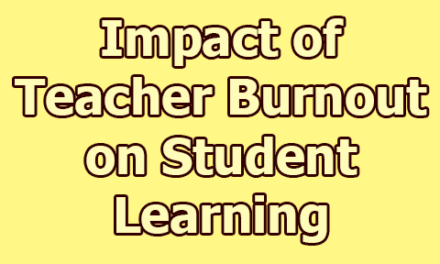The Gloverian Approach to Lesson Planning:
In an era where education is rapidly evolving to foster creativity, curiosity, and deeper engagement, traditional models of lesson planning often fall short. The Gloverian Approach to lesson planning, developed by educationalist David Glover, offers a refreshing alternative. It prioritizes the active involvement of learners in the process of inquiry, allowing them to become co-constructors of knowledge rather than passive recipients. Grounded in constructivist theory, this approach revolves around four interconnected stages: Questioning, Discussion, Investigation, and Expression. Each phase encourages critical thinking, collaboration, and creativity, ultimately leading to more meaningful and long-lasting learning experiences. In this article, we will explore the Gloverian Approach to lesson planning, looking at how it functions in the classroom and how teachers can adapt it to suit learners of various ages and abilities.
1. Questioning (Sparking Curiosity and Framing Learning):
The first step in the Gloverian Approach — Questioning — is not just a method of gathering prior knowledge; it’s the engine that drives the entire learning process. This phase sets the tone for an inquiry-based lesson and centers the learner’s experience by starting with curiosity rather than content.
1.1 Purpose of the Questioning Stage: The goal here is to engage students emotionally and intellectually. Rather than telling students what they will learn, the teacher invites them to wonder, ponder, and reflect. This engages their natural sense of curiosity and opens up space for exploration. The questions used in this phase are open-ended, provocative, and relevant to the students’ world or experiences.
1.2 Types of Questions: Effective questions in the Gloverian model are not the factual recall type (“When did World War I start?”) but instead are inquiry-rich prompts like:
- “Why do conflicts happen between nations?”
- “What would a world without rules look like?”
- “Is it ever okay to break the law?”
These kinds of questions invite multiple interpretations, connect to real-life experiences, and create a need to know — which is exactly what motivates students to want to learn more.
1.3 Teacher’s Role: In this stage, the teacher becomes a designer of intellectual invitations. They must think deeply about what questions will:
- Capture the learners’ attention
- Connect the topic to their lives
- Offer room for exploration and debate
- Encourage the asking of more questions
It’s not uncommon for the teacher to pose a central question and then encourage students to generate their own related questions. For example, in a science unit on ecosystems, the teacher might begin with, “What happens when one species disappears?” and then students might follow up with their own questions like, “Can humans cause extinction?” or “How do we save endangered species?”
This turns the learning into a dialogue, rather than a monologue.
1.4 The Power of Student Questions: A core belief in the Gloverian model is that student questions are as valuable — if not more — than teacher questions. When students are invited to ask questions of their own, several powerful things happen:
- They take ownership of their learning.
- They engage more deeply with the topic.
- They develop higher-order thinking skills.
- They feel their voice and curiosity matter.
An environment where questioning is celebrated becomes one where students feel safe to explore uncertainty — a critical condition for deep learning.
1.5 Practical Tips for the Classroom: To implement this stage effectively, teachers can:
- Use pictures, stories, or scenarios to provoke questions.
- Start with a real-life dilemma or ethical issue.
- Use a “What if…” or “Why do you think…” sentence starter board.
- Keep a “Wonder Wall” in the classroom where student questions are displayed.
- Allow time for quiet reflection before sharing questions aloud.
1.6 Examples in Action:
- Literature Class: Instead of “Today we’ll study Shakespeare’s Macbeth,” the teacher asks, “What drives someone to betray someone they love?”
- Geography Class: Rather than explaining climate zones right away, the teacher opens with, “Why do some places on Earth always feel cold while others stay hot?”
These are not just preambles to content — they are launchpads into meaningful learning.
The Questioning stage transforms the traditional lesson plan into a learning journey. It gives students a reason to engage, and more importantly, it positions them not as passive listeners, but as active seekers of knowledge. It’s the first spark in the Gloverian learning cycle — and one that can ignite a powerful chain reaction of inquiry and growth.
2. Discussion (Building Shared Understanding Through Dialogue):
After curiosity has been sparked through meaningful questioning, the Gloverian Approach moves to its second phase: Discussion. This stage is where students begin to unpack the questions posed earlier — not by looking for immediate answers, but by engaging in thoughtful, collaborative dialogue. The purpose is to deepen understanding, connect ideas, and construct meaning together.
2.1 Why Discussion Matters: In traditional classrooms, discussion often happens after content has been delivered — as a way to summarize or check understanding. In contrast, the Gloverian model places discussion before formal instruction or investigation. This shift is intentional. It allows students to:
- Share prior knowledge and experiences
- Hear different perspectives
- Clarify their own thinking by speaking aloud
- Refine or even challenge their assumptions
It’s through this social construction of knowledge that learning becomes more robust and inclusive.
2.2 The Teacher’s Role (Facilitator, Not Lecturer): In this phase, the teacher steps back from being the source of answers and takes on the role of a facilitator of inquiry. The aim is not to correct or direct students’ thinking, but to help them explore it. Teachers support the process by:
- Asking follow-up or clarifying questions
- Encouraging quieter students to participate
- Redirecting or deepening the conversation when needed
- Modeling respectful listening and disagreement
This is less about “getting it right” and more about learning to think and reason in community.
2.3 Cognitive and Social Benefits: Discussion builds more than just understanding of content — it strengthens a range of essential skills:
- Critical thinking: Students evaluate, compare, and contrast ideas.
- Communication: They learn to articulate thoughts clearly and listen actively.
- Empathy and respect: Students engage with differing viewpoints.
- Confidence: Learners see that their voice matters, even if they don’t have all the answers.
When students realize that learning is not about “performing” but about exploring, they become more open, curious, and engaged.
2.4 From Questioning to Discussion: The flow from the first to the second stage is smooth and natural. For example, if a lesson begins with the question, “What makes a good leader?”, the discussion might bring up examples from history, school life, or personal stories. Students may offer contrasting views — some might say a good leader is strict; others might value kindness and fairness. This kind of productive tension fuels further inquiry.
2.5 Classroom Strategies for Effective Discussion: To maximize the impact of this stage, teachers can:
- Use circle time or Socratic seminars to encourage open dialogue
- Set clear norms (e.g., “Listen to understand, not to respond”)
- Provide sentence starters to support students who struggle to express themselves
- Encourage students to respond to each other, not just the teacher
- Use thinking routines like “I think… I wonder… I disagree because…” to scaffold contributions
2.6 Examples in Practice:
- In a Science class: After posing the question, “What might happen if bees disappeared from the Earth?”, students could discuss the ecological impacts, food chains, and even economic consequences.
- In an Ethics class: After asking, “Is stealing ever justifiable?”, the discussion ]might draw on real-world examples, stories, and student experiences, generating rich debate and reflection.
This phase often reveals gaps in knowledge or unexpected directions for learning — which then feed directly into the Investigation stage.
The Discussion stage in the Gloverian Approach is not filler — it’s the heart of social learning. Here, students test ideas in the safe space of peer conversation. They explore complexity, learn to agree and disagree respectfully, and begin forming deeper understandings that go beyond memorization. For the teacher, it’s an opportunity to observe thinking in action and adjust the next steps in the lesson accordingly.
Done well, this phase transforms the classroom into a community of learners, where everyone’s ideas contribute to the shared pursuit of knowledge.
3. Investigation (Exploring, Discovering, and Constructing Knowledge):
Once curiosity has been ignited through Questioning and early understandings shaped through Discussion, the next step in the Gloverian Approach is Investigation. This stage invites students to actively explore and research the topic, transforming the classroom into a hub of inquiry, discovery, and intellectual risk-taking.
Where the earlier stages are about wondering and sharing, Investigation is about digging deeper — seeking evidence, analyzing data, making connections, and drawing conclusions. It is the heart of experiential, student-centered learning.
3.1 Purpose of the Investigation Stage: The key goal here is to move from surface-level engagement to deep, meaningful learning. In this phase, students pursue answers to the questions generated in the earlier stages — but not by simply being told the answers. Instead, they uncover the knowledge for themselves through inquiry, experimentation, and critical analysis.
This process fosters:
- Independent thinking
- Problem-solving skills
- Ownership of learning
- Real-world relevance
Whether students are investigating historical events, scientific phenomena, mathematical patterns, or social issues, the core principle remains the same: learning by doing.
3.2 The Student’s Role (Active Investigator): Students now become researchers, experimenters, and explorers. Depending on the topic and age group, their investigation might involve:
- Reading books, articles, or online resources
- Analyzing case studies, documents, or artworks
- Conducting science experiments or simulations
- Surveying classmates or interviewing community members
- Exploring physical environments through fieldwork
- Using digital tools to collect or visualize data
Rather than following one fixed path, students are often encouraged to take different investigative routes — tailored to their questions, interests, and preferred learning styles.
3.3 The Teacher’s Role (Guide on the Side): While students are at the center, the teacher plays a vital mentoring and scaffolding role. Rather than lecturing or giving step-by-step instructions, the teacher:
- Offers suggestions on where to look or how to approach a problem
- Helps students evaluate sources for credibility and relevance
- Models research and inquiry strategies
- Encourages perseverance and creative thinking when students feel stuck
- Provides tools or frameworks (like graphic organizers, templates, or digital platforms)
This is a highly adaptive role. Teachers may work more closely with struggling learners or step back entirely to allow more advanced groups to explore independently.
3.4 Deep Learning in Action: One of the strengths of the Gloverian model is that it emphasizes meaningful engagement, not rote memorization. Investigation is about uncovering patterns, testing ideas, and arriving at insights that are owned by the student.
For example:
- In a geography lesson, students investigating the impact of climate change on local agriculture might compare rainfall data, read farmer interviews, and explore satellite imagery.
- In a literature unit, students might investigate the social conditions surrounding a novel’s setting to understand character motivations.
- In a mathematics project, they might investigate real-world applications of ratios or percentages, such as calculating nutritional values or analyzing sports statistics.
Such learning is not only content-rich, but also skills-rich — integrating reading, writing, numeracy, critical thinking, digital literacy, and collaboration.
3.5 Links to the Previous Stages: The Investigation phase is a direct continuation of the earlier work. The questions raised and discussed earlier now act as a compass that guides research and exploration. Importantly, students are not investigating in a vacuum — they are working in response to shared inquiry, which gives their learning personal meaning and social relevance.
3.6 Practical Tips for the Classroom: To make this phase successful, teachers can:
- Break the class into groups based on student-generated sub-questions
- Provide inquiry journals or investigation planners
- Create a resource station or digital repository with curated materials
- Schedule mini-conferences to check in on group progress
- Integrate multimedia (videos, databases, podcasts, simulations) for varied learning paths
Encouraging students to document their process — not just their final conclusions — helps them reflect on how their thinking evolves.
The Investigation stage transforms students into self-directed learners. It builds their ability to inquire, evaluate, and make sense of the world using evidence. It’s messy, nonlinear, and often full of surprises — but it’s also where some of the most powerful learning happens. This stage nurtures essential 21st-century skills: curiosity, research literacy, resilience, and collaboration. When students explore for themselves, the learning becomes more authentic, personalized, and enduring.
4. Expression (Demonstrating Understanding in Creative and Purposeful Ways):
The final phase of the Gloverian Approach is Expression — the stage where students share what they have learned. Unlike traditional models that emphasize written tests or standardized assessments, this approach offers a more flexible, student-centered, and meaningful range of options for expressing understanding.
Expression is not an afterthought; it is a culminating act of learning. It gives students a chance to process, synthesize, and present their insights in ways that reflect who they are and how they’ve connected with the topic.
4.1 What Is Expression in the Gloverian Context? David Glover identified four distinct modes of expression, each of which taps into different intelligences, talents, and learning styles. These are:
(a) Passive Expression:
- Involves receiving or absorbing information.
- Examples: Watching a video, listening to a presentation, reading peers’ work.
- Even though it’s more receptive, it helps students process and reflect.
(b) Active Expression:
- Involves speaking, performing, or physically engaging with content.
- Examples: Presentations, debates, demonstrations, dramatizations.
- This mode builds confidence, verbal reasoning, and real-time communication skills.
(c) Artistic Expression:
- Uses creativity and aesthetics to communicate understanding.
- Examples: Creating artwork, writing poems or songs, building models, making short films.
- This allows students to represent abstract ideas in emotionally resonant ways.
(d) Organizational Expression:
- Involves planning, structuring, or leading a group task.
- Examples: Designing a campaign, running a workshop, creating a digital magazine, organizing a community event.
- This mode develops leadership, planning, and collaborative skills.
These categories are not rigid. Often, a student’s expression might fall across multiple modes — for instance, a group that creates a documentary (artistic) and then presents it to the school (active and organizational).
4.2 The Purpose of Expression: Expression is more than just “showing what you know.” It allows students to:
- Reflect on and consolidate their learning
- Communicate their understanding in diverse formats
- Build confidence and pride in their work
- Contribute to an authentic audience (classmates, school, parents, or community)
- Engage in peer learning by seeing how others interpreted the same topic
In essence, it turns learning into something that is shared, celebrated, and applied.
4.3 The Teacher’s Role: In this stage, the teacher acts as:
- Coach and encourager — helping students decide the most meaningful and suitable form of expression.
- Audience and assessor — listening carefully and providing thoughtful feedback.
- Facilitator of authentic presentation opportunities — arranging venues or moments for students to showcase their work, such as class exhibitions, school assemblies, or online platforms.
Importantly, assessment at this stage should be formative and reflective, focusing not only on the final product but also on the process, growth, and originality.
4.4 Links to the Learning Cycle: The Expression stage is directly shaped by the previous phases:
- The questions posed earlier influence what is expressed.
- The discussions provide vocabulary and frameworks.
- The investigation provides the knowledge base and evidence.
Expression, then, is not an isolated activity — it’s the natural culmination of inquiry and discovery. It turns internal learning into visible, shareable insight.
4.5 Practical Classroom Ideas: Here are a few ways expression can take shape:
- Literature: Instead of writing a standard essay on a novel, students write and perform monologues from a character’s perspective (active + artistic).
- Science: After researching a topic like pollution, students create infographics or posters to raise awareness in the community (organizational + artistic).
- History: Students organize a mini “museum” exhibition in class, showcasing artifacts, maps, and presentations (organizational + active).
- Civics: Learners develop a public service announcement video to address a local issue (artistic + active).
Offering choice is key — when students select the mode of expression that resonates with them, the learning becomes deeper and more personal.
Expression is where learning becomes visible, authentic, and personalized. Through diverse methods — whether passive, active, artistic, or organizational — students demonstrate not only what they’ve learned but how they understand it and why it matters.
It’s the stage where ideas take form, voices are heard, and learners feel empowered. When supported by thoughtful guidance, this final phase cements knowledge in memory, boosts engagement, and fosters pride in achievement.
Why the Gloverian Approach Matters:
In the constantly evolving landscape of education, one question continues to resonate with educators and policymakers alike: How do we make learning meaningful, relevant, and engaging for all students? The Gloverian Approach to lesson planning provides a compelling answer. Rooted in constructivist pedagogy, this approach emphasizes curiosity, inquiry, creativity, and expression — shifting the classroom from a place of passive absorption to one of active construction and exploration. But beyond its structure of four phases — Questioning, Discussion, Investigation, and Expression — the Gloverian Approach matters because it aligns with the needs of modern learners, the realities of teaching, and the goals of 21st-century education.
i. It Reflects How Learning Happens in Real Life: The Gloverian model mirrors the natural process of human learning. We do not learn by being told what to think — we learn when we ask questions, talk things through, explore, and express our understanding in our own way. Whether we’re learning how to fix a bicycle, cook a new recipe, or understand a historical event, we move through a cycle of curiosity, dialogue, discovery, and action.
By aligning with this natural pattern, the Gloverian Approach creates organic learning experiences that feel purposeful, intuitive, and memorable. It respects the way humans construct knowledge rather than imposing rigid instructional steps.
ii. It Promotes Deep and Lasting Understanding: Much of what passes for “learning” in traditional classrooms is surface-level — memorizing dates, definitions, and formulas for a test. The Gloverian Approach moves students beyond this by encouraging them to investigate ideas deeply and connect them to real-life situations, personal experiences, and broader contexts.
This emphasis on active engagement and meaning-making leads to deeper cognitive processing. When students build their own understanding — through discussion, exploration, and expression — they retain knowledge longer and are better able to transfer it to new problems or scenarios.
iii. It Honors Student Voice and Agency: One of the most powerful aspects of the Gloverian model is that it places students at the center of the learning process. It encourages them to:
- Ask their own questions
- Share their opinions and experiences
- Choose how to investigate a topic
- Decide how they want to express what they’ve learned
This fosters a sense of autonomy and ownership that is often missing in traditional instruction. Students are not just participants — they are co-creators of their learning journey. When learners feel that their voices matter, engagement, motivation, and confidence all increase.
iv. It Values Multiple Forms of Intelligence and Expression: Every student learns differently. Some are verbal, others visual. Some are logical thinkers; others shine when given a chance to create or organize. The Gloverian Approach acknowledges this diversity by allowing for multiple modes of expression — passive, active, artistic, and organizational.
This is a radical shift from the “one-size-fits-all” model of learning and assessment. It allows each student to demonstrate their understanding in a way that plays to their strengths, leading to more inclusive, equitable, and personalized learning experiences.
v. It Empowers Teachers as Designers of Learning: The Gloverian Approach doesn’t prescribe rigid steps or scripts. Instead, it encourages teachers to think like learning designers — crafting open-ended questions, facilitating rich discussions, guiding explorations, and supporting creative expression.
This not only enhances student learning, but also makes teaching more joyful and intellectually rewarding. Teachers are trusted to use their judgment, creativity, and understanding of their learners to shape meaningful experiences.
vi. It Encourages Collaboration and Social Learning: Through its emphasis on discussion, group inquiry, and shared expression, the Gloverian model supports the development of collaborative skills. Students learn how to listen, disagree respectfully, build on others’ ideas, and work as part of a team — all of which are crucial skills in both academic and real-world contexts.
This collaborative spirit also contributes to a more positive classroom culture where diversity of thought is welcomed and every student feels a sense of belonging.
vii. It Aligns with 21st-Century Educational Goals: Global education frameworks — from UNESCO to the OECD — emphasize critical thinking, creativity, communication, collaboration, and lifelong learning. The Gloverian Approach directly cultivates all of these through its structured yet flexible stages.
In a world where information is abundant but wisdom is scarce, what students need most is not more facts, but the skills to ask good questions, seek understanding, and express insight — and this is precisely what the Gloverian model nurtures.
At its core, the Gloverian Approach matters because it rehumanizes the learning process. It views education not as a mechanical transmission of content, but as a living, breathing journey of discovery. It honors both the intellect and the imagination, the individual and the community, the question and the answer. In a time when many educational systems are dominated by high-stakes testing and rigid curricula, the Gloverian Approach offers a hopeful, practical, and deeply human alternative — one that prepares students not only to pass exams but to live thoughtful, engaged, and meaningful lives.
In conclusion, the Gloverian Approach to lesson planning offers a powerful alternative to traditional models by placing inquiry, dialogue, and expression at the center of learning. Its four-step structure — Questioning, Discussion, Investigation, and Expression — mirrors the way humans naturally learn: through curiosity, conversation, exploration, and creation. This model encourages teachers to become facilitators of learning, guiding students as they ask meaningful questions, engage in thoughtful discussions, pursue purposeful investigations, and express their findings in authentic and creative ways. In a world where knowledge is abundant but critical thinking and empathy are in short supply, the Gloverian Approach provides a roadmap to deeper, more humane education. It not only prepares students to succeed academically but also equips them to be reflective, engaged citizens in an ever-changing world.
Frequently Asked Questions (FAQs):
What is the Gloverian Approach to lesson planning?
The Gloverian Approach, developed by educational thinker David Glover, is a learner-centered, inquiry-based method of planning lessons. It follows a four-step cycle: Questioning, Discussion, Investigation, and Expression. Instead of beginning with content delivery, it starts with curiosity and ends with creative demonstration, emphasizing deeper learning, student agency, and collaboration.
How is it different from traditional lesson planning?
Traditional lesson plans often begin with learning objectives and direct instruction, focusing on content delivery and assessment. In contrast, the Gloverian Approach begins with open-ended questions and student engagement. It encourages learners to explore topics through dialogue, inquiry, and self-expression, promoting critical thinking, creativity, and autonomy rather than rote memorization.
Is the Gloverian Approach suitable for all age groups?
Yes. While the specific activities and expectations will vary by age and development level, the four-phase structure can be adapted for early childhood, primary, secondary, and even adult education. Younger learners may investigate through guided play or stories, while older students might conduct research projects or organize community initiatives.
How does this model support diverse learning styles?
The Gloverian model explicitly recognizes and values multiple forms of expression — passive, active, artistic, and organizational. This allows students to choose how they demonstrate understanding based on their strengths, interests, and preferred modes of learning, making it more inclusive and equitable.
What role does the teacher play in this approach?
The teacher acts as a facilitator, guide, and co-learner. Instead of delivering lectures, they:
- Pose meaningful questions
- Guide discussions
- Support student investigations
- Help students choose and refine expression formats
- Provide feedback and resources
Teachers shift from being the source of knowledge to the designer of learning experiences.
Can this approach work in exam-focused or rigid curriculum environments?
Yes, but with thoughtful integration. Teachers can align Gloverian-style units with required outcomes and standards. For example, the investigation phase can target specific content knowledge, while the expression phase can produce assessable artifacts like essays, presentations, or reports. It can enhance engagement without sacrificing academic rigor.
How does assessment work in the Gloverian Approach?
Assessment in this approach is typically formative, ongoing, and multi-dimensional. It includes:
- Observations during discussions
- Reflections during investigation
- Evaluation of final expressions (oral, written, artistic, etc.)
- Peer and self-assessments
The emphasis is on understanding, growth, and creativity, not just right-or-wrong answers.
What kinds of questions are used in the first stage?
The best questions are open-ended, thought-provoking, and relevant. They might explore big ideas, moral dilemmas, or real-world problems. For example:
- “What makes a society fair?”
- “Why do people resist change?”
- “What would happen if electricity disappeared?”
These types of questions invite curiosity and deeper exploration.
Can the Gloverian Approach be used across subjects?
Absolutely. It is cross-curricular and can be used in:
- Science (e.g., investigating natural disasters)
- Literature (e.g., exploring themes of identity)
- Social Studies (e.g., understanding migration)
- Art (e.g., expressing emotions through different media)
- Math (e.g., exploring patterns or real-life data)
It’s especially effective in project-based, thematic, or interdisciplinary units.
Does it require a lot of preparation?
While it may require more initial planning — especially in crafting good questions and organizing resources — it often leads to more independent learning and less need for constant instruction during the lesson. With experience, teachers find it energizing and sustainable.
Is the Gloverian Approach supported by educational research?
Yes. The Gloverian Approach draws on well-established constructivist learning theories (e.g., Piaget, Vygotsky, Bruner), which emphasize learning through interaction, inquiry, and social context. Its focus on student agency, dialogue, and creative expression aligns with modern educational priorities like critical thinking, SEL (Social-Emotional Learning), and 21st-century skills.
Can it be used in online or blended learning environments?
Definitely. The four stages can be adapted for digital tools:
- Questioning: Use discussion forums or Padlet boards
- Discussion: Hold video calls or collaborative chats
- Investigation: Provide links to digital resources or research tools
- Expression: Allow students to create blogs, videos, infographics, or digital portfolios
Online platforms can even enhance student choice and voice when used thoughtfully.
What if students struggle with open-ended learning?
Support and structure are key. Teachers can:
- Scaffold tasks with graphic organizers or prompts
- Provide model questions or example projects
- Encourage peer collaboration
- Offer check-ins and guided reflection
Over time, students grow more confident in navigating open-ended learning environments.
How does this approach benefit students long-term?
Students develop essential lifelong learning skills:
- Questioning and critical thinking
- Collaboration and communication
- Self-direction and creativity
- Empathy and cultural awareness
Rather than just preparing students to perform well on tests, the Gloverian Approach prepares them to think deeply, work with others, solve problems, and contribute meaningfully to the world.

Library Lecturer at Nurul Amin Degree College
